1. Introduction to Caster Brakes
In the dynamic world of mobility solutions, caster brakes play an indispensable role in ensuring safety and operational efficiency. Often overlooked, these components are pivotal in preventing accidents and maintaining control in various applications, from industrial equipment to everyday office chairs. Recent research data from relevant organizations alarmingly indicates that thousands of accidents occur globally every day due to caster brake issues. These incidents primarily stem from three critical factors: overloading, improper operation, or the selection of inappropriate caster brake types.
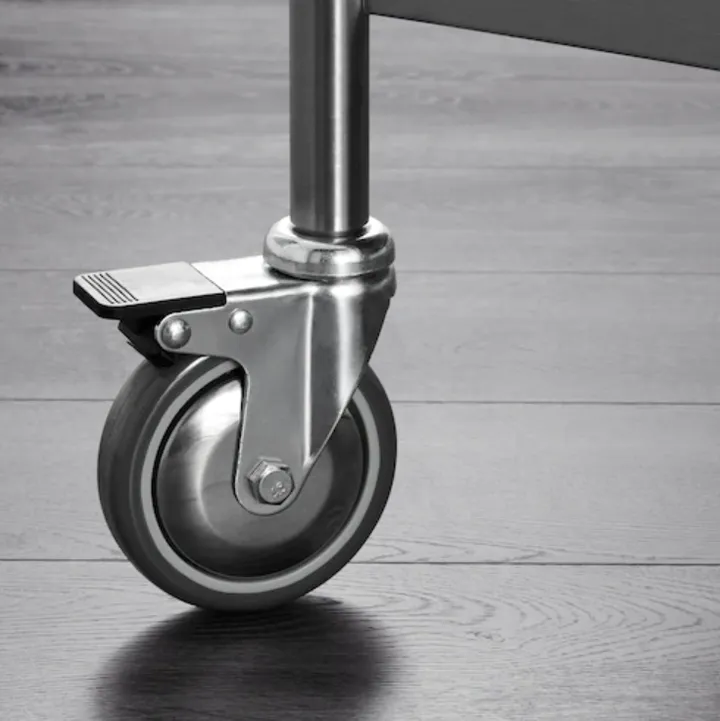
In light of these insights, this article aims to delve deeply into the world of caster wheel brakes. We will explore various types of caster brakes, discussing their unique features, applications, and safety aspects. By understanding the differences and specific uses of each brake type, users can make informed decisions, ensuring both the safety of the equipment and its operators.
2. Detailed Overview of Caster Wheel Brake Types
A. Total Brake



The Total Brake system represents the epitome of caster wheel brake technology, offering unparalleled safety and stability. This mechanism, when engaged, locks both the wheel’s rotation and its directional movement, rendering the caster completely immobile. This feature is especially crucial in environments where absolute stability is a non-negotiable requirement, such as in medical facilities or heavy-duty industrial applications. The construction of Total Brakes typically involves robust materials like galvanized steel, nylon, or stainless steel, ensuring durability and long-term reliability. Furthermore, these brakes come in various trigger types, including left and right brakes, A/B brakes, and up and down brakes, catering to different user preferences and application scenarios. The versatility in design and the safety assurance make Total Brakes a go-to choice for applications demanding the highest level of security and control.
B. Single Brake

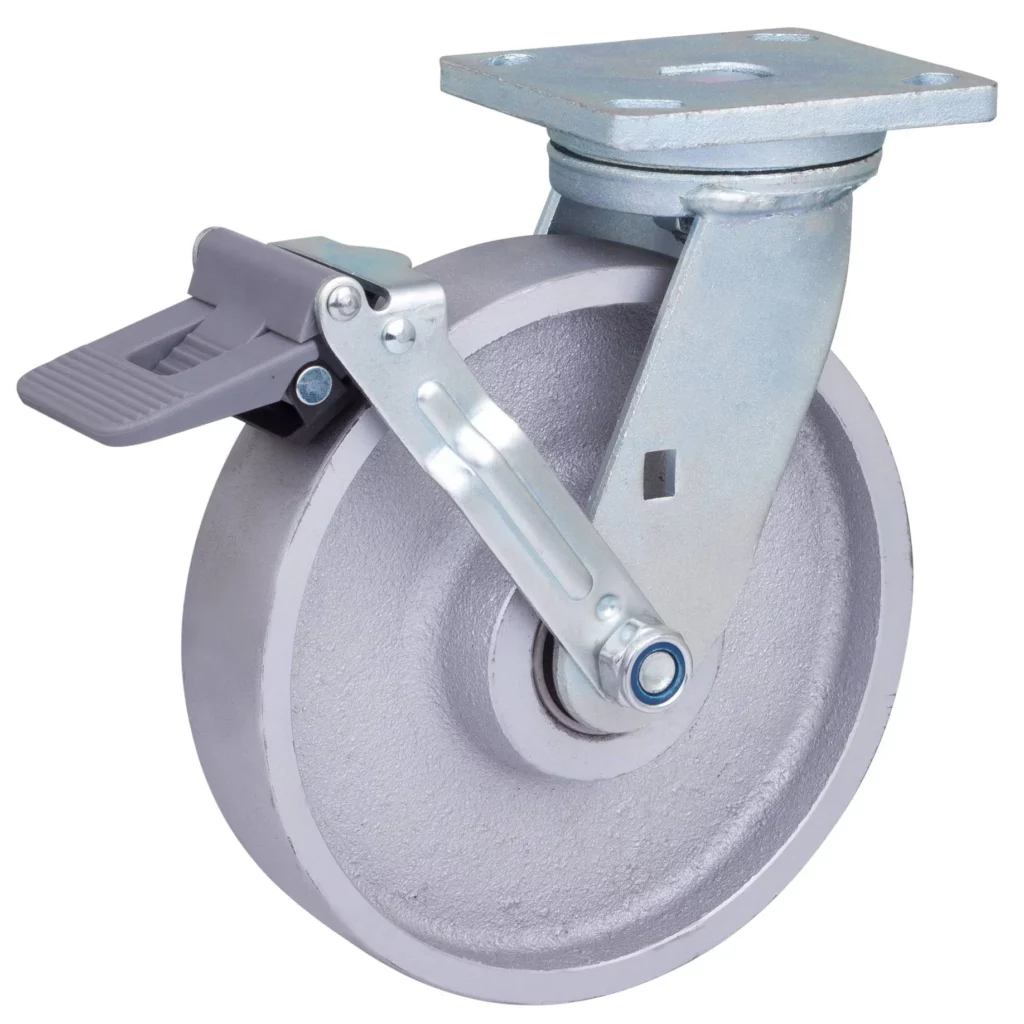

The Single Brake system, characterized by its operational simplicity and flexibility, is another vital type in the caster brake family. This system locks the rotation of the caster wheels while allowing the caster’s direction to be adjusted. This dual functionality offers a balance between mobility and stability, suitable for environments where directional adjustments are frequent but accidental movement is a risk. However, this flexibility demands careful operation, as improper use can lead to accidents. The single brake system requires users to be mindful of the load and the terrain to ensure safety. As we explore the nuances of the Single Brake, we’ll delve into its ideal applications, handling techniques, and safety tips to maximize its efficacy while minimizing risks.
C. Side Brake
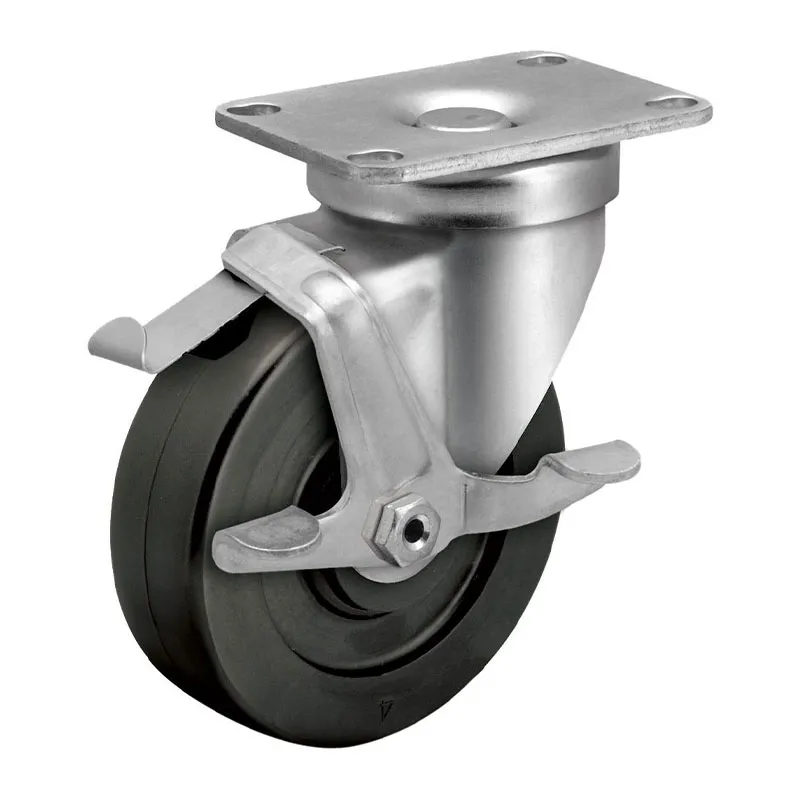
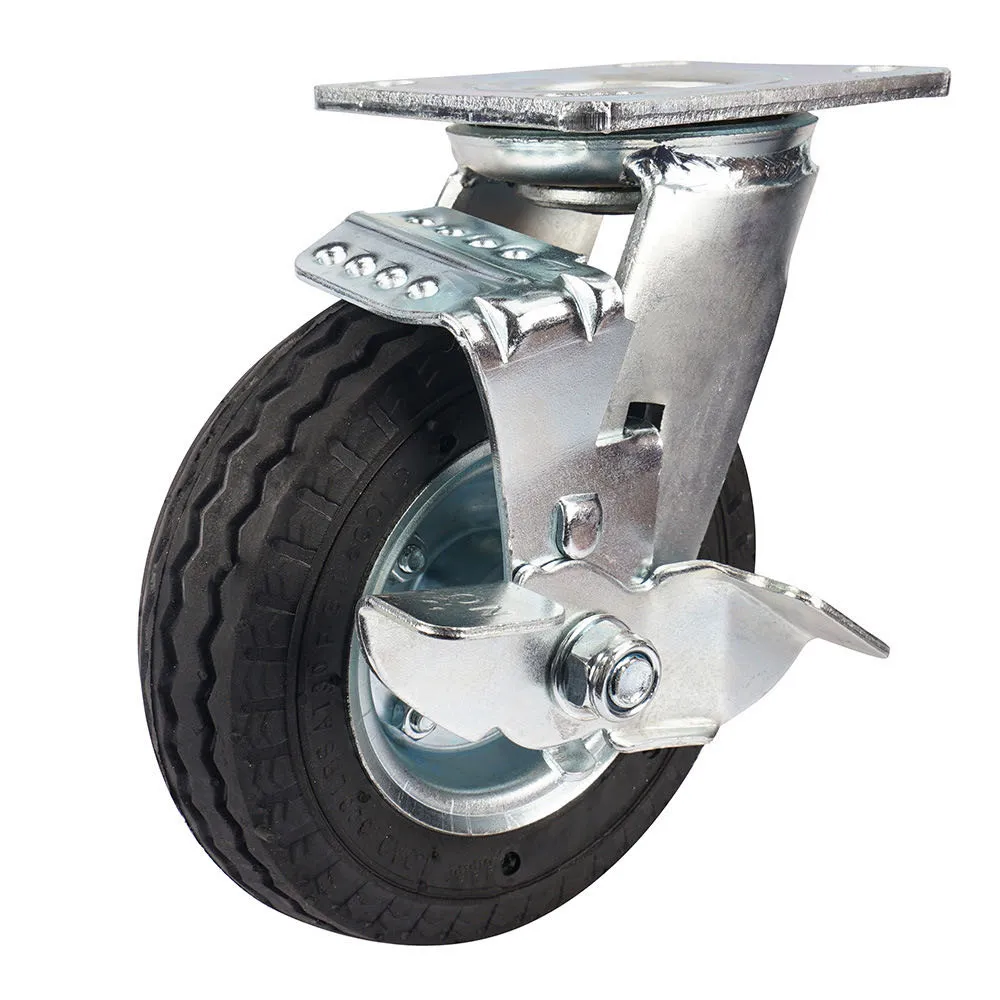
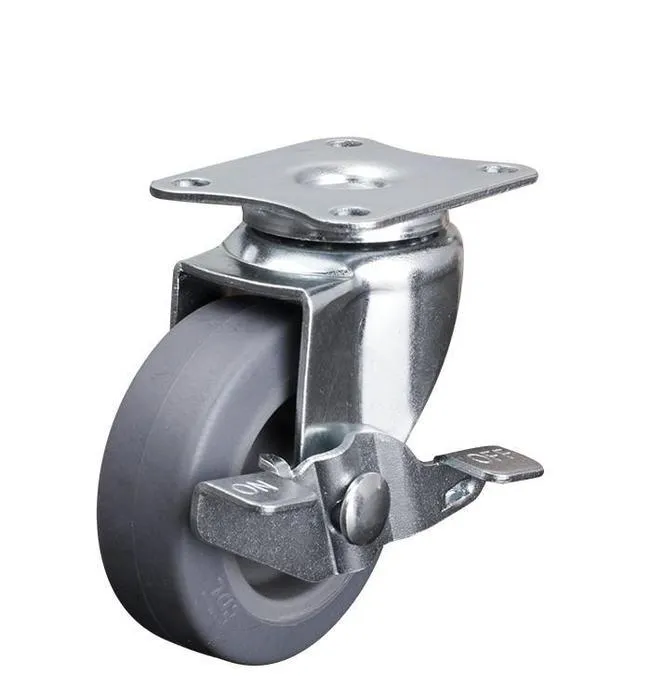
The Side Brake stands out for its ergonomic design and enhanced aesthetic appeal. Located on the side of the caster, it is easily engaged with a foot, making it a user-friendly option in environments where hand-free operation is preferred, like in kitchen trolleys or library carts. An added advantage of the Side Brake is its ability to rotate and hide the brake mechanism, thereby improving the overall look of the caster and reducing the risk of accidental tripping or activation. Although it offers less total lock security compared to the Total Brake, the Side Brake provides an excellent balance of safety and convenience, particularly in applications where aesthetics and ease of use are important considerations.
D. Swivel Lock

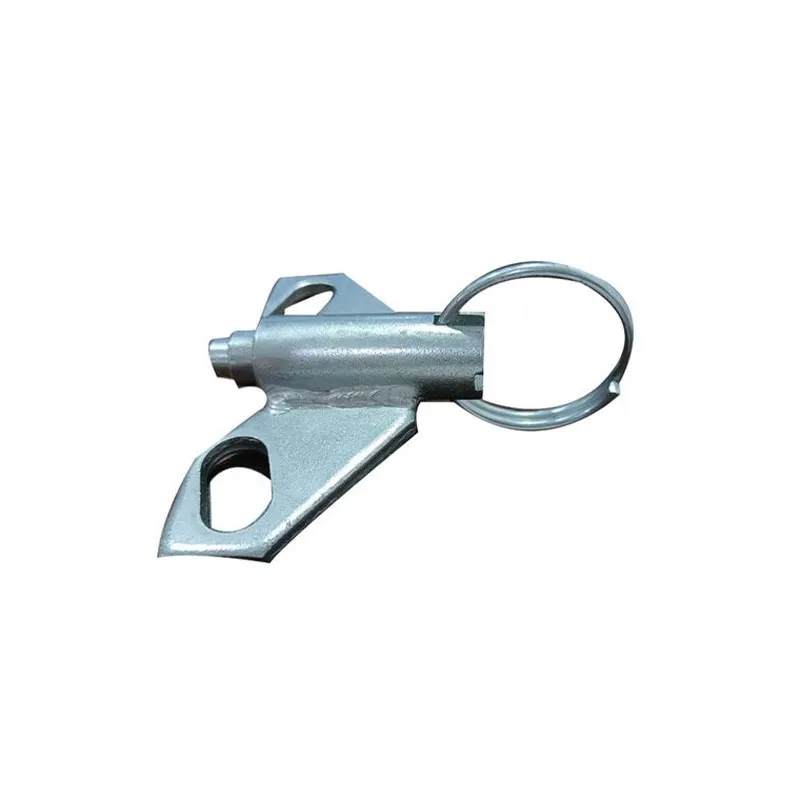
Swivel Locks are the backbone of precision and control in caster wheel operations, especially in heavy-duty applications. This latch-type locking plate inserts into the swivel plate of the caster, locking its steering function. This feature is crucial in environments where directional stability is as important as immobilization, such as in heavy machinery or industrial equipment. Swivel Locks are often used in conjunction with Single Brakes, offering a combination of flexibility and control. This system is particularly effective in managing heavy loads, where precision in movement and stability is crucial for safety and operational efficiency. As we examine Swivel Locks, we will explore their design, application, and the added layer of safety they bring to heavy-duty caster operations.
E. Caster Central Locking System
Blickle caster central locking systemThe Central Locking System is a revolutionary advancement in caster technology, characterized by its ability to simultaneously brake multiple casters through a single control mechanism. This system greatly enhances both safety and convenience, particularly in applications where coordinating the lock of several casters is necessary, such as in hospital devices or equipment carts. The Central Braking System streamlines operations, making it easier and quicker to secure equipment. Despite its higher cost, its popularity is increasing, particularly in the medical and high-end technology sectors, where efficiency and safety are paramount.
3. How to Choose Brake Caster Wheels
Choosing the right brake for a caster is a critical decision that greatly affects the safety and functionality of the equipment. Based on the insights provided in our detailed overview, here are the key considerations to guide you in choosing the right caster brake:
- Assess Application Requirements: Start by assessing the specific requirements of your application. Total Brakes provide the highest level of safety in most cases.
- Consider operational convenience: In environments where ease of use is a priority, such as retail, or hospitality, side brakes provide a convenient, foot-operated solution. They are particularly useful in situations where hands-free operation and aesthetics are required.
- Understand the load and terrain: The weight and type of load and the terrain on which the casters will be used are key factors. The swivel lock + single brake is ideal for heavy-duty applications requiring precise movement and stability, while the central brake system is best for synchronizing multiple casters under heavy loads, often used in medical and high-tech environments.
- Materials and Durability: Make sure the material of the brake is suitable for your usage environment. Materials such as galvanized steel, nylon or stainless steel offer varying degrees of durability and weather resistance, which is critical for longevity and consistent performance.
4. Summarization
In this comprehensive exploration of caster wheel brakes, we have traversed the landscape of various brake types, each with its unique functionalities and applications. From the robust security of Total Brakes to the ergonomic convenience of Side Brakes, and from the precision control of Swivel Locks to the innovative efficiency of Central Braking Systems, it’s clear that the right choice of caster brake can significantly enhance the safety and functionality of any mobility solution.
At Bullcaster, we understand that the selection of a caster wheel brake is not just a matter of preference but a critical decision impacting safety, efficiency, and productivity. Our commitment to innovation, quality, and customer satisfaction is evident in our wide range of caster brakes, designed to meet the diverse needs of various industries and applications. Whether you’re in the medical field, technology sector, or any industry requiring reliable mobility solutions, Bullcaster offers top-tier products tailored to your specific needs.
Reach out now and experience the Bullcaster difference in quality and innovation. Let us be your partner in crafting mobility solutions that push the boundaries of safety and efficiency.


